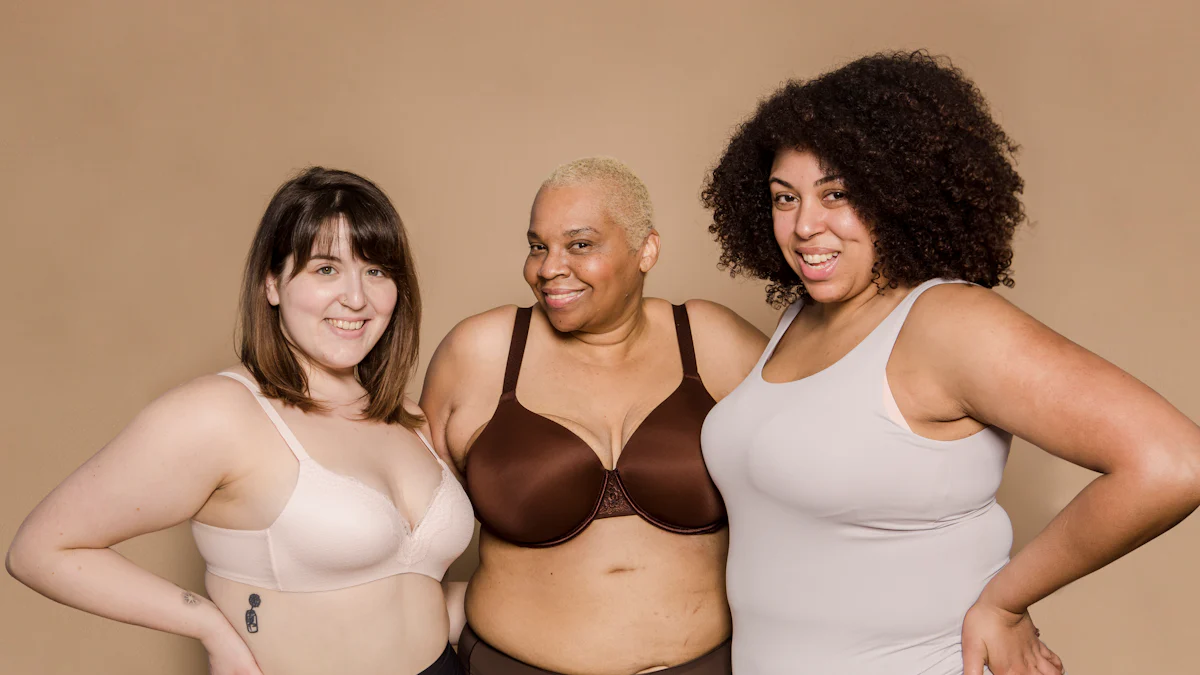 In the realm of fashion, the embrace of adaptive clothing for women marks a pivotal shift towards inclusivity. This transformative approach caters to individuals with diverse abilities, redefining traditional norms. The evolution of adaptive wear not only addresses functional needs but also celebrates individuality through style and comfort. Leading brands and designers are championing this movement, weaving innovation into every stitch to empower women of all backgrounds.
In the realm of fashion, the embrace of adaptive clothing for women marks a pivotal shift towards inclusivity. This transformative approach caters to individuals with diverse abilities, redefining traditional norms. The evolution of adaptive wear not only addresses functional needs but also celebrates individuality through style and comfort. Leading brands and designers are championing this movement, weaving innovation into every stitch to empower women of all backgrounds.
The Rise of Inclusive Fashion
In the early 20th century, the roots of adaptive fashion began to take hold, driven by functional necessity. Adjustable closures and easy-access fastenings were introduced, revolutionizing how individuals interacted with their clothing. This marked a significant shift towards inclusivity within the fashion industry.
As time progressed, adaptive fashion evolved to embrace diversity and cater to a wider audience. What started as functional designs has now transformed into cutting-edge technology integrated into everyday wear. This evolution serves as a reminder of the ongoing progress in inclusive design, highlighting the importance of considering all individuals’ needs.
A pivotal moment in history occurred in 1959 when mass-market adaptive fashion became widely available. This marked the introduction of adaptive apparel to the general market, making it more accessible to individuals with diverse abilities. The availability of these clothing options not only provided functionality but also promoted a sense of empowerment and inclusivity within the community.
Features of Adaptive Clothing
Design Innovations
Magnetic Closures
Adaptive clothing for women incorporates magnetic closures to simplify the dressing process. These innovative closures eliminate the need for intricate buttons or zippers, providing a convenient solution for individuals with limited dexterity. By utilizing magnetic technology, these closures ensure quick and effortless fastening, enhancing both functionality and independence.
Easy Touch Closures
Another notable feature of adaptive clothing is the integration of easy touch closures. These specialized fastenings are designed with simplicity in mind, allowing individuals to secure their garments with minimal effort. Whether it’s Velcro straps or snap buttons, these closures offer a user-friendly experience, catering to the diverse needs of women seeking comfort and ease in dressing.
Open Back Tops
In the realm of adaptive fashion, open back tops have emerged as a stylish yet practical choice for women with mobility challenges. These tops feature discreet openings at the back, facilitating seamless dressing without compromising on aesthetics. With a focus on both comfort and style, open back tops redefine traditional fashion norms, offering a blend of sophistication and functionality.
Sensory-Friendly Options
Neurodivergent Needs
Adaptive clothing recognizes the neurodivergent needs of individuals by incorporating sensory-friendly options. From tagless designs to soft fabrics, these garments prioritize comfort and minimize sensory overload for those with unique sensitivities. By considering neurodiverse requirements, adaptive clothing promotes inclusivity and ensures that every woman can express her style comfortably.
Comfort and Style
The fusion of comfort and style lies at the core of adaptive fashion for women. Embracing soft materials, seamless construction, and adjustable features, these garments prioritize both physical ease and aesthetic appeal. By offering a harmonious balance between comfort and style, adaptive clothing empowers women to embrace their individuality while feeling confident in their attire.
Impact on Women’s Lives
Adaptive clothing for women offers a myriad of benefits that extend beyond mere functionality. By incorporating innovative design elements, adaptive clothing enhances independence and promotes inclusivity, ultimately transforming the lives of women with diverse abilities.
Enhancing Independence
Functional Benefits
The functional benefits of adaptive clothing are profound, providing individuals with disabilities the opportunity to dress with ease and comfort. With features like magnetic closures and easy touch fastenings, these garments streamline the dressing process, reducing discomfort and frustration. The seamless construction of adaptive apparel ensures a hassle-free experience, empowering women to maintain their independence in daily routines.
Emotional Empowerment
Emotional empowerment is a significant outcome of embracing adaptive clothing. By offering stylish options that cater to individual needs, these garments instill a sense of confidence and self-assurance in women with disabilities. The ability to express personal style through adaptive fashion fosters a positive self-image and boosts emotional well-being. Through inclusive design and thoughtful considerations, adaptive clothing empowers women to embrace their uniqueness and face each day with dignity.
Promoting Inclusivity
Self-Expression
Adaptive clothing serves as a platform for self-expression, allowing women to showcase their personality through fashion. By incorporating sensory-friendly fabrics and customizable features, these garments enable individuals to tailor their wardrobe choices to reflect their identity. The freedom to express oneself through clothing not only enhances personal style but also promotes inclusivity by celebrating diversity in fashion.
Confidence and Dignity
Confidence and dignity go hand in hand with the adoption of adaptive clothing. The tailored designs and functional innovations in adaptive wear provide women with disabilities the assurance they need to navigate daily activities with grace and poise. Feeling comfortable in one’s attire translates into a heightened sense of confidence, empowering individuals to engage fully in social interactions and pursue their aspirations without limitations.
Fashion’s transformative power extends beyond fabric and design; it is a force for empowerment and inclusivity. Inclusive fashion revolutionizes societal norms, promoting confidence and comfort for all individuals. By embracing diversity in design and representation, the industry offers a platform for self-expression and pride. This shift towards inclusivity not only enriches the market but also fosters a healthier body image, challenging unrealistic beauty standards. Collaboration and dialogue are essential to ensure that every voice is heard, celebrated, and represented in the evolving landscape of fashion.






